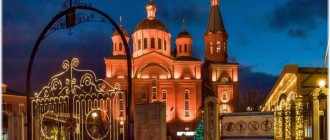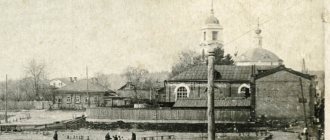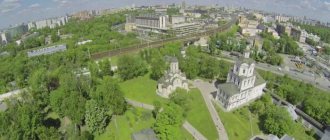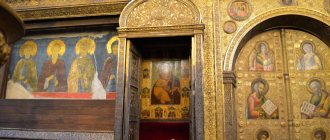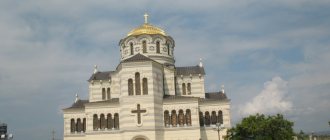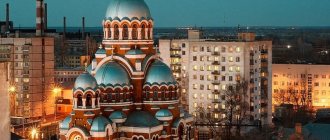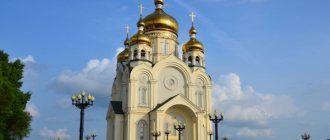Mir
Russia Astrakhan region Astrakhan Assumption Cathedral (Astrakhan) Map is loading…
{"format":"leaflet","minzoom":false,"maxzoom":false,"limit":50,"offset":0,"link":"all","sort":[""], "order":[],"headers":"show","mainlabel":"","intro":"","outro":"","searchlabel":"\u2026 \u0441\u043b\u0435\ u0434\u0443\u044e\u0449\u0438\u0435 \u0440\u0435\u0437\u0443\u043b\u044c\u0442\u0430\u0442\u044b","default":"","import-annotation":false,"width ":"auto","height":"350px","centre":{"text":"","title":"""link":"""lat":46.34936110000000297759470413438975811004638671875,"lon": 48.03328609999999798674252815544605255126953125,"icon":""},"title":"","label":"","icon":"","lines":[],"polygons":[], "circles":[ ],"rectangles":[],"copycoords":false,"static":false,"zoom":8,"defzoom":14,"layers":["OpenStreetMap"],"image layers":[] ,"overlays":[],"resizable":false,"fullscreen":true,"scrollwheelzoom":true,"cluster":false,"clustermaxzoom":9,"clusterzoomonclick":true,"clustermaxradius":80, "clusterspiderfy":true,"geojson":"","clicktarget":"","showtitle":true,"hidenamespace":false,"template":"","userparam":"","activeicon": "","pagelabel":false,"ajaxcoordproperty":"","ajaxquery":"","locations":[{"text":"\u003Cb\u003E\u003Ca href=\"/palomnik/%D0% A3%D1%81%D0%BF%D0%B5%D0%BD%D1%81%D0%BA%D0%B8%D0%B9_%D0%BA%D0%B0%D1%84%D0%B5% D0%B4%D1%80%D0%B0%D0%BB%D1%8C%D0%BD%D1%8B%D0%B9_%D1%81%D0%BE%D0%B1%D0%BE%D1% 80_(%D0%90%D1%81%D1%82%D1%80%D0%B0%D1%85%D0%B0%D0%BD%D1%8C)\» title=\»\u0423\u0441\ u043f\u0435\u043d\u0441\u043a\u0438\u0439 \u043a\u0430\u0444\u0435\u0434\u0440\u0430\u043b\u044c\u043d\u044b\u0439 \u0441\u0 43e\u0431\u043e\u0440 (\u0410 \u0441\u0442\u0440\u0430\u0445\u0430\u043d\u044c)\»\u003E\u0423\u0441\u043f\u0435\u043d\u0441\u043a\u0438\u0439 \u043a\u043 0\u0444\u0435\u0434\ u0440\u0430\u043b\u044c\u043d\u044b\u0439 \u0441\u043e\u0431\u043e\u0440 (\u0410\u0441\u0442\u0440\u0430\u0445\u0430\u043d\u0 44c)\u003C/a\u003E\ u003C/b\u003E\u003Chr /\u003E\u003Ca href=\"/palomnik/%D0%A1%D0%B2%D0%BE%D0%B9%D1%81%D1%82%D0%B2%D0% BE:%D0%90%D0%BD%D0%BD%D0%BE%D1%82%D0%B0%D1%86%D0%B8%D1%8F\» title=\»\u0421\u0432\u043e \u0439\u0441\u0442\u0432\u043e:\u0410\u043d\u043d\u043e\u0442\u0430\u0446\u0438\u044f\»\u003E\u0410\u043d\u043d\u043e\u0442 \u0430\u0446\u0438\ u044f\u003C/a\u003E: \u0420\u0430\u0441\u043f\u043e\u043b\u043e\u0436\u0435\u043d \u043d\u0430 \u0442\u0435\u0440\u0440\u043 8\u0442\u043e\u0440\u0438 "smw-highlighter" \» data-type=\ "2\" data-state=\"persistent\" data-title=\"\u0418\u043d\u0444\u043e\u0440\u043c\u0430\u0446\u0438\u044f\" title=\"\u0420\u0430\ u0441\u043f\u043e\u043b\u043e\u0436\u0435\u043d \u043d\u0430 \u0442\u0435\u0440\u0440\u0438\u0442\u043e\u0440\u0438\u0438 \u 0410\u0441\u0442\u0440\u0430\ u0445\u0430\u043d\u0441\u043a\u043e\u0433\u043e \u043a\u0440\u0435\u043c\u043b\u044f. \u041f\u043e\u0441\u0442\u0440\u043e\u0435\u043d \u0432 1699\u20141710 \u0433\u043e\u0434\u044b \u043f\u043e\u0434 \u0440\u 0443\u043a\u043e\u0432\u043e\u0434\ u0441\u0442\u0432\u043e\u043c \u043a\u0430\u043c\u0435\u043d\u043d\u044b\u0445 \u0434\u0435\u043b \u043c\u0430\u0441\u0442\u 0435\u0440\u0430\u0414\u043e\ u0440\u043e\u0444\u0435\u044f \u041c\u044f\u043a\u0438\u0448\u0435\u0432\u0430; \u0441\u0442\u0440\u043e\u0438\u0442\u0435\u043b\u044c\u0441\u0442\u0432\u043e \u043a\u0443\u0440\u0438\u0440\u043e\u0432\u 0430\u043b\u043c\u0438\u0442 \u0440\u043e\u043f\u043e\u043b\u0438\u0442 \u0421\u0430\u043c\u043f\u0441\u043e\u043d. \u0423\u0441\u043f\u0435\u043d\u0441\u043a\u0438\u0439 \u0441\u043e\u0431\u043e\u0440 \u0441\u0447\u0438\u0442\u0430\u0435\ u0442\u0441\u044f\u043e\u0434 \u043d\u0438\u043c \u0438\u0437 \u043b\u0443\u0447\u0448\u0438\u0445 \u043e\u0431\u0440\u0430\u0437\u0446\u043e\u0432 \u044 0\u0443\u0441\u0441\u043a\u043e \u0433\u043e \u0446\u0435\u0440\u043a\u043e\u0432\u043d\u043e\u0433\u043e \u0437\u043e\u0434\u0447\u0435\u0441\u0442\u0432\ u0430\u043d\u0430\u0447\u0430 \u043b\u0430 XVIII \u0432\u0435\u043a\u0430\»\u003E\u003Cspan class=\»smwtext\»\u003E \u2026 \u003C/span\u003E\u003Cspan class=\»smwttcontent\»\u003E\u0 420\ u0430\u0441\u043f\u043e\u043b\u043e\u0436\u0435\u043d\u043d\u0430 \u0442\u0435\u0440\u0440\u0438\u0442\u043e\u0440\u0438\u0 438\u0410\u0441\u0442\u0440\ u0430\u0445\u0430\u043d\u0441\u043a\u043e\u0433\u043e \u043a\u0440\u0435\u043c\u043b\u044f. \u041f\u043e\u0441\u0442\u0440\u043e\u0435\u043d \u0432 1699\u20141710 \u0433\u043e\u0434\u044b \u043f\u043e\u0434 \u0440\u 0443\u043a\u043e\u0432\u043e\u0434\ u0441\u0442\u0432\u043e\u043c \u043a\u0430\u043c\u0435\u043d\u043d\u044b\u0445 \u0434\u0435\u043b \u043c\u0430\u0441\u0442\u 0435\u0440\u0430\u0414\u043e\ u0440\u043e\u0444\u0435\u044f \u041c\u044f\u043a\u0438\u0448\u0435\u0432\u0430; \u0441\u0442\u0440\u043e\u0438\u0442\u0435\u043b\u044c\u0441\u0442\u0432\u043e \u043a\u0443\u0440\u0438\u0440\u043e\u0432\u 0430\u043b\u043c\u0438\u0442 \u0440\u043e\u043f\u043e\u043b\u0438\u0442 \u0421\u0430\u043c\u043f\u0441\u043e\u043d. \u0423\u0441\u043f\u0435\u043d\u0441\u043a\u0438\u0439 \u0441\u043e\u0431\u043e\u0440 \u0441\u0447\u0438\u0442\u0430\u0435\ u0442\u0441\u044f\u043e\u0434 \u043d\u0438\u043c \u0438\u0437 \u043b\u0443\u0447\u0448\u0438\u0445 \u043e\u0431\u0440\u0430\u0437\u0446\u043e\u0432 \u044 0\u0443\u0441\u0441\u043a\u043e \u0433\u043e \u0446\u0435\u0440\u043a\u043e\u0432\u043d\u043e\u0433\u043e \u0437\u043e\u0434\u0447\u0435\u0441\u0442\u0432\ u0430\u043d\u0430\u0447\u0430 \u043b\u0430 XVIII \u0432\u0435\u043a\u0430\u003C/span\u003E\u003C/span\u003E\u043e\u0433\u043e \u0446\u0435\u0440\u043a\u043e\u043 2\u043d\u043e\u0433\ u043e \u0437\u043e\u0434\u0447\u0435\u0441\u0442\u0432\u0430 \u043d\u0430\u0447\u0430\u043b\u0430 XVIII \u0432\u0435\u043a\u0430 ","title":"\u0423\ u0441\u043f\u0435\u043d\u0441\u043a\u0438\u0439 \u043a\u0430\u0444\u0435\u0434\u0440\u0430\u043b\u044c\u043d\u044b\u0439 \u0 441\u043e\u0431\u043e\u0440 ( \u0410\u0441\u0442\u0440\u0430\u0445\u0430\u043d\u044c)","link":"","lat":46.34936110000000297759470413438975811004638671875,"lon":48 .03328609999999798674252815544605255126953125,"icon":""}]" imageLayers":[]}
46.349437; 48.033017
Russia, Astrakhan, V. Trediakovskogo street, 2/2
Astrakhan, Astrakhan region 414000
Russia
Office telephone numbers
: +7 (8512) 44-46-47,
Assumption Cathedral
- the largest Orthodox church in Astrakhan. Located on the territory of the Astrakhan Kremlin. Built in 1699-1710 under the direction of stone mason Dorofei Myakishev; construction was supervised by Metropolitan Sampson. The Assumption Cathedral is considered one of the best examples of Russian church architecture of the early 18th century, and is the only architectural temple complex preserved in Russia where the temple and Lobnoye Mesto are connected.
History[[edit]h2>
The history of Astrakhan is inextricably linked with the history of the Astrakhan Kremlin, the main architectural dominant of the city. Construction of the Kremlin began in 1558, and this year is officially considered the founding date of Astrakhan.
The first cathedral church on the territory of the Astrakhan Kremlin was built by St. Kirill, the city planner of Astrakhan (March 31; hereinafter the dates are given according to the new style), in 1568. Saint Cyril, fulfilling the instructions of Tsar John IV, arrived in Astrakhan with a list of the miraculous image of the Most Holy Theotokos “Vladimir”. In honor of this especially revered icon in Rus', the first wooden temple on the territory of the Kremlin was consecrated. But, unfortunately, over 35 years the temple became very dilapidated, so in 1602, construction of a new stone cathedral in honor of the Dormition of the Mother of God began near the eastern wall of the fortress. However, this temple was not destined to stand for long.
The decision to build a new church was made under Metropolitan Savvatiy (1683-1696). But Bishop Savvaty died suddenly, and his endeavors were continued by Metropolitan Sampson (1697-1714). For the construction of the new cathedral, which began on October 1, 1699, thirty professional masons were invited, led by the serf architect Dorofei Myakishev. Construction took almost twelve years and was completed by 1710. During this time, the architects erected a temple of a regular cubic shape with five domes. The outside of the cathedral was decorated with shaped bricks and white stone carvings, the windows and domed domes were framed by columns in the style of Corinthian decor, and the semicircular arches were filled with paintings of biblical subjects. Three such arches were built on each side of the temple.
The cathedral was divided into two floors: the upper church was consecrated in honor of the Dormition of the Blessed Virgin Mary. The tall and bright temple was intended for ceremonial services in the warm season. The lower temple, vaulted and poorly lit, was at the same time a “winter” temple and the tomb of the Astrakhan hierarchs. On the western side, the gallery of the cathedral abutted the place of execution, which served as a platform for bishops’ exits and prayer services.
The main attraction of the upper Assumption Church was the eight-tiered iconostasis. The traditions of Russian church architecture did not allow the installation of more than seven tiers of icons, so art historians rightly call the iconostasis of the Astrakhan Cathedral unique. The icons belonged to the brushes of famous contemporary masters: Nikifor Popov, icon painter of the Kazan Metropolitan, and Ivan Andreev, house icon painter of the famous merchant Grigory Dimitrievich Stroganov. The decoration of the iconostasis was the silver royal gates, made in St. Petersburg by the jeweler Theodor Stande. The gates were donated to the cathedral by the merchant Peter Sapozhnikov.
Through the efforts of the same merchant, four massive pillars were erected from artificial marble in 1812, supporting the vaults of the upper temple. The bases of the pillars, as well as the vaults in the five chapters, were decorated with paintings. The compiler of the “Description of the Astrakhan Cathedral of the Assumption Cathedral,” Archpriest Nikolai Kamensky also wrote: “...on the slope of the southern front window, the act of the Holy Alliance in 1815 between the three sovereigns, the emperors of All Russia, the Austrian and the King of Prussia, is depicted in marble.” The walls of the temple were decorated with icons in silver vestments and paintings on biblical themes.
The lower church in honor of the Vladimir Icon of the Mother of God differs significantly from the upper one. As high and bright as the upper temple is, the lower one is dark and low. This temple was specially built as a burial place for Astrakhan bishops. The temple was devoid of paintings, the iconostasis was made very small, since services were held here only on great holidays. Instead of painting, the walls of the temple were covered with gravestone inscriptions indicating a specific burial. Among those buried in the lower church of the Assumption Cathedral, especially remarkable is St. Theodosius, the first Archbishop of Astrakhan, who boldly denounced the impostor False Dmitry I. St. Theodosius died in 1607 and was mentioned in the ancient calendar as “the new wonderworker of the Russian land.”
In a special crypt were the relics of the Hieromartyr Joseph, Metropolitan of Astrakhan, who was brutally murdered in 1671 during the uprising of Stepan Razin. From the very day of his martyrdom, numerous miracles and healings took place at the saint’s tomb. Unfortunately, there was no regular recording of these miracles, which prevented the canonization of the saint, although the name of the Astrakhan Metropolitan had long been included in various calendars. Canonization took place at the request of the Hieromartyr Mitrofan (Krasnopolsky) through the act of the All-Russian Local Council, held in 1918 in Moscow. The memory of Saint Joseph is solemnly celebrated annually on May 24.
In addition, in the lower church there was the burial place of St. Gerasim (Dobroserdov), known for his missionary exploits in the Siberian region. Bishop Gerasim stayed at the Astrakhan See for a relatively short time (1877–1880), and was glorified as a Siberian saint (comm. June 10, Art.).
The shrines with the relics of the saints are now in the lower church and are open for worship by believers, and most of the remains of the buried bishops were reburied in 2001 in the crypt of the cathedral.
In pre-revolutionary years, the Assumption Cathedral housed many Orthodox shrines, most of which have now been lost.
The events of 1917 became a sad page in the history of the cathedral. The cathedral was subjected to unauthorized searches, as a result of which the Bolsheviks took church valuables, cash and interest-bearing papers worth one hundred thousand rubles from the temple. On January 18, 1918, the cathedral was closed for worship, but was then returned to believers in 1922. During the campaign to confiscate church valuables, almost all relics were confiscated and sent for melting down. Almost the entire cathedral sacristy was destroyed. In 1929, there was even a question about the destruction of the Assumption and Trinity Cathedrals of the Astrakhan Kremlin. The decision was revised the same year with a decree ordering the provision of redevelopment plans. The iconostasis of the upper church was broken and burned in 1931 as a result of a subbotnik. The Red Army soldiers of the local garrison trained in shooting accuracy, shooting at holy images. From that moment until 1992, the cathedral was used as an ammunition depot, barracks for military personnel, a museum and a center for mass and propaganda work on local history.
After a long break, on Christmas Day in 1992, a festive service took place in the lower church of the Assumption Cathedral. In the upper church, the first service was held on May 24 of the same year, on the day of remembrance of the Hieromartyr Joseph, Metropolitan of Astrakhan.
After the return of the cathedral, its interior and exterior are gradually beautified. The walls and domes of the temple were renovated, and the paintings in the zakomars were restored. A new iconostasis has been installed in the lower church, and the ceiling is decorated with paintings in the Byzantine style. Icons from the masters of the Trinity-Sergius Lavra, executed in the strict canonical Old Russian style, are mounted in the walls of the temple. Divine services are held here daily.
The upper temple of the Assumption Cathedral is now experiencing a rebirth: the walls made of artificial marble have been restored in a close to historical form. The cast iron floor was recreated according to surviving descriptions. The dome painting was made by craftsmen from Palekh in analogy with the Assumption Cathedral of the Moscow Kremlin. On the eve of the patronal feast day, August 25, 2009, His Eminence Bishop Jonah, Archbishop of Astrakhan and Enotaevsky, in the concelebration of the clergy of the diocese, performed the great consecration of the upper church of the Assumption Cathedral. After the anniversary events, regular services on Sundays and great holidays are resumed in the upper church.
Second Council
From the very first days of its foundation, Astrakhan began to develop rapidly, as it was located at a busy crossroads of trade routes from Europe to Asia. Soon the population of the city increased several times, and the old cathedral could no longer accommodate everyone who wanted to attend church services. In addition, the wooden building was built hastily, and within 30 years it had become very dilapidated.
In the early 1590s, with the blessing of the patriarch, Abbot Theodosius arrived in Astrakhan, who was tasked with building a “cathedral and apostolic church” instead of the old one. Work on its construction lasted about 10 years. The stone church was consecrated in 1602 in honor of the Dormition of the Mother of God. It became the center of the religious and social life of the city. The icon of the Vladimir Icon of the Mother of God was also moved there.
Shrines[[edit]h2>
Relics, particles of relics:
- Cancer with the relics of St. Theodosius Archbishop Astrakhan. He died on December 18/31, 1607. He was buried in the south side of the old cathedral in 1617. In 1708, the relics were reburied in the lower church of the new cathedral. On March 30, 2002 he was canonized as a saint. The relics were transferred from the crypt to the temple and placed in a reliquary.
- Cancer with the relics of Sschmch. Joseph Metropolitan Astrakhan. During the Razin uprising in 1671, he died a martyr. He was buried in the old cathedral. In 1708, the relics were reburied in the lower church of the new cathedral. In 1918, at the Local Council he was canonized. The relics were transferred from the crypt to the temple and placed in a reliquary.
- Cancer with the relics of St. Gerasima ep. Astrakhan. He died in 1980. He was buried in the lower church of the Assumption Cathedral. Canonized as a saint in 2002
- Reliquary with a particle of relics. Thaddeus Archbishop Astrakhansky Was shot in 1937. Canonized in 1997. A piece of the relics was donated to the Astrakhan diocese with a stay in the Assumption Cathedral by Archbishop Victor of Tver in May 2012.
- Cancer with the relics of Sschmch. Hilarion, Archbishop. Vereisky. Died in 1929. Canonized as a saint at the Council of Bishops in 1999. A particle of the relics was transferred to the Assumption Cathedral by Abbot Tikhon (Shevkunov), abbot of the Sretensky Monastery in December 2013.
Particularly revered icons:
- Icon with particles of the relics of the Optina elders. A piece of the relics was brought in 2000 from Optina Pustyn.
- Icon with a particle of the relics of St. Maxim the Greek. A piece of the relics was brought from the Trinity-Sergius Lavra in 2001.
Particularly revered sacred objects (relics):
- Mace sschmch. Joseph Metropolitan Astrakhan.
- Dedicated to the Astrakhan Diocese for storage by the Astrakhan Museum-Reserve in 1995.
Cathedral of the Assumption of the Blessed Virgin Mary
By the end of the 17th century, the main stone temple of the Kremlin began to deteriorate. The then Astrakhan Metropolitan Savvaty began raising funds for the construction of a new cathedral. Donations from citizens amounted to 10,000 rubles. However, the Metropolitan died before construction began. The work that had barely begun was suspended, and the money he collected was transferred to the civil department. When the new Metropolitan Sampson decided to return to the implementation of his predecessor’s plan, it turned out that most of the amount was “disappeared”, and he was given only 3,996 rubles. This money was barely enough to pay the workers who were dismantling the old cathedral and to purchase building materials for the construction of a new one. Then the archpastor wrote to Tsar Peter Alekseevich and asked for money. Although the capital did not respond to the metropolitan’s request, the local merchants, touched to the quick, decided to support the bishop and donated a large sum to a charitable cause.
Pilgrim[[edit]h2>
Divine services in the Assumption Cathedral are held daily. Hours, Liturgy - 8:00, on holidays - 8:30. Evening service - 17:00.
Every day, except Monday, after the Liturgy, a prayer service and a memorial service are held. On Thursday, the Liturgy and prayer service with an akathist to St. Nicholas are performed in the St. Nicholas Gate Church.
Baptism of children and adults by appointment and after public conversations before the Sacrament.
The hymns of the Saturday Liturgy are performed by a male choir. At the end of the service, a prayer service is held in the Cyril Chapel.
The sacrament of confession is performed daily at 8:30.
Every day a priest is on duty in the temple until 16:30.
Current schedule of services
Construction
The Metropolitan recruited the serf architect Dorofei Myakishev to work on the new cathedral and hired thirty masons. According to the Klyucharyov Chronicle, they began laying the foundation on October 1, 1699. Construction lasted 12 years, and each worker received 13 rubles.
At the initial stage, the architect intended to make the cathedral single-domed. However, in 1702, due to a violation of construction technology, the vault of the temple collapsed. Then Myakishev replaced one huge dome with five small ones.
In 1705, work was suspended, as the city and the Astrakhan Kremlin found themselves in the midst of a riot. After order was restored, the masons began work again. In 1707, the lower church was illuminated in honor of the Vladimir Icon of the Mother of God and it began to be used as a tomb for important church dignitaries.
A year later, the chapel of Saints Cyril and Athanasius of Alexandria was created in it, but work had to be stopped again, as a strong fire damaged the recently erected cathedral domes. The main work on the construction of the cathedral was completed only by the beginning of 1710, and on August 14 it was consecrated.
Address and contacts
If you come to Astrakhan, you can easily find the Assumption Cathedral (address: Trediakovskogo Street, 2/2) by going to the local Kremlin. The best way to get there from anywhere in the city is by taxi. You can also use minibuses or buses that go to public transport stops on the squares. Lenin and Oktyabrskaya.
Be sure to visit Astrakhan. The Assumption Cathedral of the local Kremlin deserves attention not only due to the shrines located there, but also as one of the best examples of Russian architecture of the late 18th century.
origin of name
Today there is also no clear version regarding the origin of the city’s name. There are several legends. The first of them is associated with the Aesir tribe that inhabited these regions. Brave warriors, for their courage and honor shown in battles, received from the khan a document that exempted them from duties in favor of the Tarkhan power. In honor of this significant event, the aces named the city As-tarkhan.
There is also an opinion based on data from a written source. In the description of his journey, the Arab subject of Ibn Batuta tells that the city was named after one pious pilgrim. The Turkic hajj, who chose this place for settlement, received it as a reward from the Sultan duty-free, or, as they said then, the Sultan made the pilgrim a Tarkhan. This is where the name Hadji Tarkhan came from. As it developed, the village grew into a village, and then turned into a city.
Traveler Afanasy Nikitin also spoke in support of this name. He visited these places in the mid-fifteenth century and argued that Astrakhan is a Russian version based on Khadzhi Tarkhan.
Astrakhan local historian Vladimir Gusev believes that the first name of the city was Aztargan, and it was founded around 625 by the Western Turkic Kagan Ozbulan.
Where is Astrakhan located?
This amazing ancient Russian city is located in the Southern Federal District of Russia. In addition to the Astrakhan region, it includes five more subjects. The territory of the district is located in the south of the European part of Russia and belongs to the Volga-Caspian region.
Answering the question where Astrakhan is located, it should also be said that it is all located on eleven islands of the Caspian lowland, they are connected to each other by thirty bridges. The bulk of the city's population lives on the left bank of the Volga, and only a fifth lives on the right.
Description
At the time the services began, the Cathedral of the Assumption of the Blessed Virgin Mary was a magnificent sight and was one of the most beautiful buildings in Astrakhan. Architecturally, it had a regular cubic shape and was decorated with five domes. The outside of the cathedral was decorated with shaped bricks and decorated with elaborate carvings on white stone. The semicircular arches (three on each side of the building) were covered with paintings of biblical scenes, and the windows and domed domes were framed by columns with lush Corinthian decor, which Astrakhan had never seen before.
The Assumption Cathedral, the history of whose construction you already know, was divided into 2 floors. The upper, “cold” church, consecrated in honor of the Dormition of the Blessed Virgin Mary, was intended for “summer” services, and the lower one was not only the tomb of local Orthodox hierarchs, but also a “winter” heated church. On the western side, the cathedral gallery overlooked the so-called place of execution. It served as a platform for mass prayer services for residents of Astrakhan on special occasions and for bishops’ outings.
Interior of the upper temple
The main attraction of the Assumption Cathedral was the iconostasis. It was considered unique because, contrary to the tradition of Russian church architecture, it had 8 tiers. Matvey Loginov, as well as Ivan Timofeev and his son Terenty, worked on the creation of the iconostasis.
Icons for the Assumption Church were commissioned from such famous masters as the Kazan icon painter Nikifor Popov and the house painter of the famous merchant G. D. Stroganov, Ivan Andreev. The iconostasis was decorated with silver royal doors. They were made for the cathedral in St. Petersburg by the German jeweler Theodor Stande. The customer was the merchant P. Sapozhnikov, who brought the royal doors to Astrakhan. The Assumption Cathedral has received gifts from this benefactor more than once. For example, in 1812, he donated money for the construction of four massive pillars made of artificial marble, intended to strengthen the vaults of the temple. Their bases, as well as the ceilings of 5 chapters, were decorated with religious paintings. In addition, on the slope of the south front window, the act of alliance between the King of Prussia and the Emperors of Austria and All Russia, concluded in 1815, was depicted in marble. In addition, the admiration of the parishioners was aroused by the huge gilded chandelier, lowered on long chains, decorated with lush chased decor.
A little history
The origins of Astrakhan go back centuries. The first mention of the place where the city is located today dates back to the thirteenth century. Officially, the date of birth is considered to be 1558, when the construction of a wooden Kremlin began on the left bank of the Volga. It was then, after joining the Russian state, that a new page began in the history of the Astrakhan Khanate. However, the city received its official status later - at the beginning of the eighteenth century, under Peter I.
But historians have other opinions on this matter. Astrakhan local historian Vladimir Gusev believes that Astrakhan is already 1385 years old. The scientist believes that the emergence of the city cannot be dated to any specific year, since it is a long process, expressed in political, economic and cultural development.
Some historians, studying the mythological descriptions of these places, are inclined to believe that the land of Astrakhan is very ancient - it is about seventy thousand years old!
